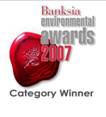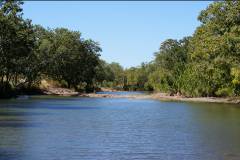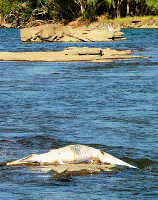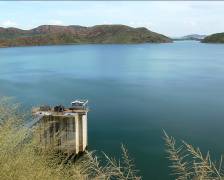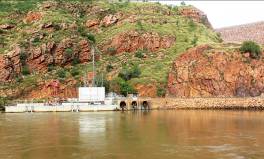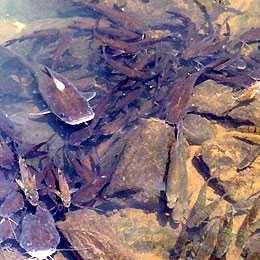A heartfelt cry from the Kununurra Community to the Nation now fighting to stop the cane toad from crossing into WA since Sept. 2004. |
 |
|
TOADS ARE LESS THAN 5 KMS FROM RAMSAR LISTED LAKE ARGYLE & 3.4KMS FROM WA/NT VICTORIA HIGHWAY BORDER! … and it is still raining! WHAT WILL HAPPEN TO OUR ICONIC TOPEND FISH and BIRDS?
|
“The Lake Argyle community is really gearing up for cane toads, since the KTB reconnaissance team found a cane toad just off the Duncan Road in the Matilda Creek, around 5kms from the north east corner of Lake Argyle 2 weeks ago but still just in the NT,” Lee Scott-Virtue. “The estimated 18 – 28,000 freshwater Lake Argyle crocodiles should also be getting clear about the difference between cane toads and native frogs – it only takes one cane toad swallowed to kill a crocodile,” Sandy Boulter. Gearing up for the Lake Argyle community includes:
|
|---|
Photo : Below the dam wall (far right), which is home to some very large crocodiles. |
The Lake Argyle community is about 70 kms from Kununurra. About 20 people live there running camp grounds, chalets and tours; and managing the water, the lake, and the pump and plumbing infrastructure. The East Kimberley has had a very wet, wet season. “This means that the KTBs have not been able to access all the cane toad breeding areas as often as we would like. As the first sign of wattles is now being seen signalling the start to the onset of the dry season, the KTBs wait to see where the toads are and how much breeding has happened at the front lines,” Mary Anne Winton, KTB Aboriginal Coordinator. |
When asked why he is concerned about cane toads in Lake Argyle, Lake Argyle tour operator, and resident, Steve Sharp expostulated “Bloody obvious isn’t it?!”, “Lake Argyle’s diverse ecosystem, extremely popular with visitors who come to see the huge variety of wildlife, will be dramatically affected by this invasion”, Greg Smith, Lake Argyle tour operator and resident also airing everyones’ concerns.
Map to right shows the recent reconnaissance on the NE corner of Lake Argyle by KTB volunteer John Cugley . |
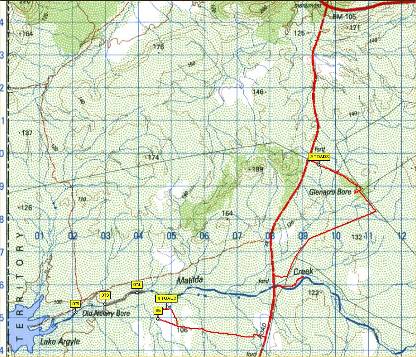 |
BACKGROUND INFORMATION
WHY KTBs ARE CONCERNED ABOUT TOADS AROUND LAKE ARGYLE
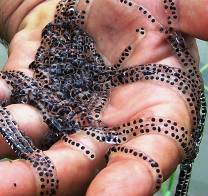 |
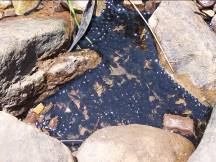 |
Cane toad eggs and early stage tadpoles are lethally toxic to fish, birds and crabs that ingest them.
Birds of Lake Argyle (waterbirds eat frogs and tadpoles)
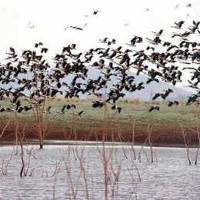 |
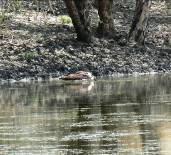 |
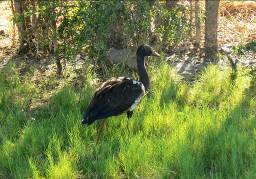 |
| Magpie Geese in Flight on Lake Argyle from Lake Argyle Cruises website | on edge of billabong surrounded by cane toads |
and then next morning dead beside billabong from cane toad toxin ingestion. |
Magpie Geese are special and are referred to as a, “biological blast from the past” (“Western Australian Wetlands” Giblett and Webb) in the waterfowl world to which they belong. They are quite different from the 148 species of other ducks and geese around the world.
Lake Argyle is a WA Ramsar site. The Ramsar Treaty recognises wetlands of international significance around the world, especially in their significance as waterfowl habitat. The Treaty includes the adjacent shores of the identified wetlands, many of which, in the case of Lake Argyle are perfect cane toad habitat The shallow shores on the south east corner of Lake Argyle is prime waterbird habitat.
Bird species on the Lake number at least 240 (prior to cane toads). It was estimated in 1988 that the SE corner of the Lake supported 20,000 waterfowl.
Lake Argyle Cruises recognise that birds that are otherwise very difficult to see in the wild are easily seen on the Lake including the Yellow Chat, Purple Crowned Fairy Wren and the Long Toed Stint: http://www.lakeargylecruises.com
Freshwater Fish of Lake Argyle (fish eat frog tadpoles and eggs, and so will eat cane toad eggs and tadpoles)
Photo: Catfish from Lake Argyle Cruises Website : |
Lake Argyle largest fish is the massive “Silver Cobbler”, which can weigh up to 40kg. It feeds on fish (probably including tadpoles) and crustaceans. “Sooty Grunter” and increasing numbers of barramundi are found in the Lake, as are a number of other species. Close reading of the Northern Territory Fishnote shows that a lot of the fish information is educated guesswork because there has not been sufficient research into the impact of cane toads on freshwater fish. The Fishnote does state that cane toad eggs and tadpoles can poison freshwater fish. However, the Note says that barramundi have been seen to spit out cane toad tadpoles, which it is assumed is because of the bad taste. The NT Fishnote also suggests that high toad numbers could poison freshwater. |
“Cane toads, cane toad tadpoles or cane toad eggs can most likely poison fish that eat them. Many freshwater fish often eat native tadpoles and frogs. However, it appears that cane toad tadpoles have a very unpleasant taste. Barramundi and other fish have been observed spitting out any cane toad tadpoles they have attacked…. However, for most species, the likely effects of consuming cane toads, cane toad tadpoles and cane toad eggs can only be predicted from what we know about the life cycle and feeding habits of a particular species of fish , ” NT Fishnote No 42 June 2008, B.; NT Department of Regional Development, Primary Industry, Fisheries and Resources Grace, Senior Research Scientist, Fisheries Research, Darwin, http://www.nt.gov.au/d/Content/File/p/Fishnote/FN42.pdf
Table 1. Some common freshwater fish of the Top End and how likely they are to be affected by cane toads (modified from Van Dam et al. 2002) ”, NT Fishnote No 42 June 2008, B. Grace, Senior Research Scientist, Fisheries Research, Darwin; NT Department of Regional Development, Primary Industry, Fisheries and Resources http://www.nt.gov.au/d/Content/File/p/Fishnote/FN42.pdf
Common name |
Scientific name |
Susceptibility |
Comment |
Barramundi |
Lates calcarifer |
Low |
Spits out toad tadpoles with no obvious effect. |
Tarpon |
Megalops cyprinoides |
Possible |
Known to eat frogs. |
Saratoga |
Scleropages jardinii |
Possible |
Known to eat frogs. |
Rainbowfish |
Melanotaenia spp. |
Low |
May eat cane toad eggs and die. Does not eat tadpoles. |
Spangled perch |
Leiopotherapon unicolor |
High |
May die, even after spitting out cane toad tadpoles. |
Archerfish |
Toxotes spp. |
Possible |
Mainly feeds on insects. |
Northern trout Gudgeon |
Mogurnda mogurnda |
Probable |
Known to be affected by cane toads. Some fish may learn to not to eat cane toad tadpoles. |
Mouth almighty |
Glossamia aprion |
Low |
May attack and kill cane toad tadpoles, but not swallow them. |
Fork-tailed catfish |
Arius spp. |
Possible |
Known to eat frogs. |
Mullet |
Family Mugilidae |
Low |
Plankton feeders. |
“Dead cane toads can also poison the water, although this is probably very rare, because the water would need very strong concentrations of cane toad toxins before fish are affected. It is also possible that cane toads may compete with fish for resources such as food or habitat, but this would be extremely difficult to measure”, NT Fishnote No 42 June 2008, B. Grace, Senior Research Scientist, Fisheries Research, Darwin, NT Department of Regional Development, Primary Industry, Fisheries and Resources
http://www.nt.gov.au/d/Content/File/p/Fishnote/FN42.pdf
For more information contact:
Lee Scott Virtue: KTB President: 9168 2576 OR 9168 7080
Sandy Boulter : KTB CEO: 0427 508 582
Steve Sharpe (Lake Argyle): 08 9167 8910
Greg Smith (Lake Argyle): 08 9168 7361
SEE OUR NEWSLETTER, MEDIA RELEASES AND PHOTOS ON WWW.CANETOADS.COM.AU
As over 2,000 Kununurra based registered Kimberley Toad Buster award acknowledged volunteer toad predators enjoy their FOURTH YEAR of WEEKLY hunting and gathering cane toads over 200,000 sq kms as a way of life, they are working hard slow and thin the invasion numbers, to save native species from extinction by the cane toad invasion and to preserve the maximum amount of genetic diversity within each native species population that survives. Cane toads in all this stages of their life cycle poison just about all fauna that eat them, pollute waters of ecosystems and use up food resources. The KTBs have caught, weighed, measured, killed and recorded over 253,000 adult cane toads; and countless millions of tadpoles and metamorphs (thereby taking over 150,000 kgs of cane toad biomass out of our already threatened precious NT desert eco-systems) with the help of private donations, Lotterywest, and the federal and WA State governments. As at February 2009, the KTB toadbusting comprised an estimated 490,000 volunteer field hours (and including support and administration hours it is probably closer to 950,000 volunteer hours. At $20 an hour, this equates to a lot of volunteer work value.
Some of our supporters and sponsors include:
 |
 |
 |
 |
 |
 |
 |
 |
 |
 |

